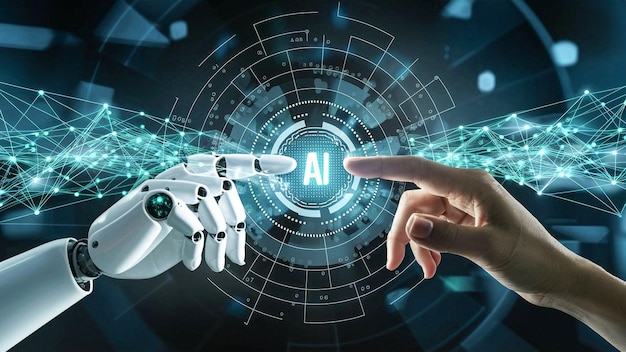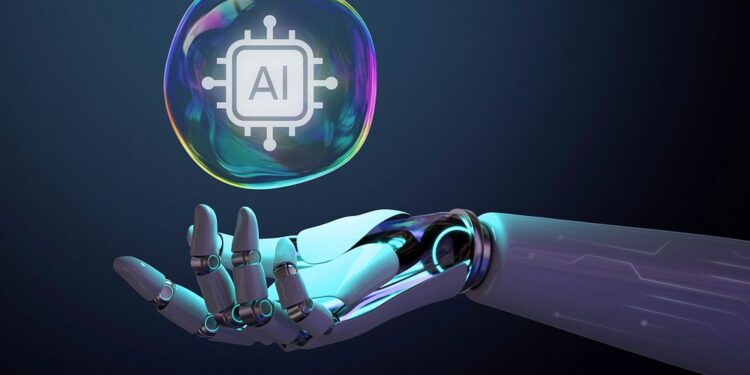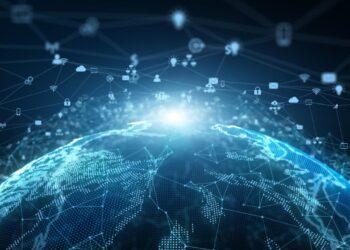Artificial Intelligence (AI) is no longer a futuristic concept confined to the realm of science fiction; it’s a dynamic, rapidly evolving force that is fundamentally reshaping every facet of our lives, industries, and economies. The proliferation of innovative AI solutions marks a pivotal moment, transitioning from theoretical models to tangible applications that solve complex problems, enhance efficiency, and unlock unprecedented opportunities. These aren’t just algorithms; they are intelligent systems capable of learning, adapting, and making decisions that are increasingly augmenting, and in some cases surpassing, human capabilities. From revolutionizing healthcare and finance to transforming creative industries and environmental conservation, AI is proving to be the ultimate catalyst for progress. This comprehensive article delves into the intricate world of innovative AI solutions, dissecting their core technological underpinnings, the profound benefits they deliver across diverse sectors, the significant challenges they confront, and the exciting future they promise for humanity.
The Core of Innovative AI Solutions

At its essence, innovative AI goes beyond simple automation or rule-based systems. It embodies capabilities that allow machines to perform tasks traditionally requiring human intelligence, often with greater speed, accuracy, and scale. This intelligence is built upon several foundational pillars.
A. Machine Learning (ML): This is the bedrock of most modern AI, enabling systems to learn from data without explicit programming for every scenario.
- Supervised Learning: AI learns from labeled data (input-output pairs) to make predictions or classifications. Examples include image recognition (identifying cats in photos) or spam detection.
- Unsupervised Learning: AI discovers patterns and structures in unlabeled data. This is used for customer segmentation, anomaly detection, or reducing data complexity.
- Reinforcement Learning (RL): AI learns through trial and error, performing actions in an environment to maximize a reward. This is crucial for training autonomous systems like self-driving cars or robotic control.
- Deep Learning (DL): A subset of ML using artificial neural networks with multiple layers (deep networks) to learn complex patterns from large datasets. It excels in tasks like image and speech recognition, natural language processing, and medical diagnosis.
B. Natural Language Processing (NLP) and Understanding (NLU): These branches of AI enable machines to understand, interpret, and generate human language.
- Text Analysis: Extracting meaning, sentiment, and entities from unstructured text data (e.g., customer reviews, legal documents).
- Speech Recognition: Converting spoken language into text, foundational for voice assistants and transcription services.
- Natural Language Generation (NLG): Creating human-like text from structured data (e.g., generating news articles, financial reports, or personalized marketing copy).
- Translation: Enabling real-time language translation.
C. Computer Vision: This allows machines to “see” and interpret visual information from the world, much like humans do.
- Object Detection and Recognition: Identifying and locating objects within images or video streams (e.g., recognizing faces, vehicles, products).
- Image Segmentation: Dividing an image into segments to make it easier to analyze.
- Activity Recognition: Understanding actions and behaviors from video (e.g., detecting suspicious activity in surveillance footage, analyzing gestures).
- Medical Imaging Analysis: Assisting in diagnosing diseases by analyzing X-rays, MRIs, and CT scans.
D. Robotics and Automation: The integration of AI with physical machines to perform tasks in the real world.
- Autonomous Navigation: Enabling robots and vehicles to move and operate independently in complex environments.
- Precise Manipulation: Allowing robots to perform delicate and complex tasks that require fine motor skills and tactile sensing.
- Human-Robot Interaction (HRI): Developing intuitive ways for humans and robots to collaborate safely and effectively.
E. Big Data Analytics and Predictive Modeling: AI thrives on data. The ability to collect, process, and analyze massive, complex datasets is crucial.
- Data Lakes and Warehouses: Infrastructures for storing diverse types of data at scale.
- Predictive Maintenance: Using historical data to forecast equipment failures, allowing for proactive repairs.
- Fraud Detection: Identifying unusual patterns in transactions or behavior that indicate fraudulent activity.
- Customer Behavior Prediction: Forecasting purchasing habits, churn risk, or engagement levels.
F. Generative AI: A cutting-edge area of AI that can create new content, rather than just analyzing existing data.
- Image Generation: Creating realistic or stylized images from text prompts (e.g., DALL-E, Midjourney).
- Text Generation: Producing creative writing, code, summaries, or articles (e.g., large language models like GPT).
- Music and Video Generation: Composing original music or generating video clips.
- Synthetic Data Generation: Creating artificial datasets for training other AI models, particularly useful when real data is scarce or sensitive.
Diverse Applications of Innovative AI Solutions
The reach of AI solutions is incredibly broad, impacting virtually every sector and opening up entirely new possibilities.
Healthcare and Medicine
AI is transforming diagnostics, drug discovery, and personalized patient care.
- AI-Assisted Diagnosis: AI algorithms analyze medical images (X-rays, MRIs, CT scans, pathology slides) to detect subtle anomalies that human eyes might miss, aiding in early diagnosis of cancers, neurological disorders, and other conditions.
- Drug Discovery and Development: AI accelerates the identification of potential drug candidates, predicts their efficacy and toxicity, and optimizes clinical trial designs, significantly reducing the time and cost of bringing new medicines to market.
- Personalized Treatment Plans: AI analyzes a patient’s genetic profile, medical history, lifestyle, and real-time data to recommend highly individualized treatment protocols and drug dosages (precision medicine).
- Predictive Analytics for Patient Deterioration: AI models can predict which patients are at high risk of developing complications or deteriorating, allowing for proactive intervention.
- Robotic Surgery Assistance: AI-powered surgical robots enhance precision, minimize invasiveness, and reduce recovery times for complex procedures.
Finance and Banking
AI is revolutionizing fraud detection, risk management, and personalized financial services.
- Fraud Detection and Prevention: AI systems analyze billions of transactions in real-time, identifying complex patterns of fraudulent activity that human analysts would miss, drastically reducing financial losses.
- Algorithmic Trading: AI-powered algorithms execute trades at high speed, analyzing market data and predicting trends to optimize investment strategies.
- Credit Scoring and Risk Assessment: AI models provide more accurate and nuanced assessments of creditworthiness and financial risk, improving lending decisions.
- Personalized Financial Advice (Robo-Advisors): AI-driven platforms offer tailored investment advice, portfolio management, and financial planning services to individuals.
- Customer Service Automation: AI-powered chatbots and virtual assistants handle customer queries, process transactions, and provide support 24/7.
Retail and E-commerce
AI is enhancing customer experience, optimizing supply chains, and driving sales.
- Personalized Recommendations: AI engines analyze Browse history, purchase patterns, and demographics to suggest products that customers are most likely to buy, boosting sales and improving customer satisfaction.
- Demand Forecasting and Inventory Management: AI accurately predicts consumer demand, optimizing inventory levels, reducing waste, and preventing stockouts.
- Customer Service Chatbots: AI-powered bots handle routine customer inquiries, process returns, and provide instant support, freeing up human agents for more complex issues.
- Dynamic Pricing: AI algorithms adjust product prices in real-time based on demand, competitor pricing, and inventory levels to maximize revenue.
- Fraud Prevention (Online): AI detects fraudulent online transactions and account takeovers.
Manufacturing and Industry (Industry 4.0)
AI is driving automation, efficiency, and predictive capabilities in production.
- Predictive Maintenance: AI analyzes data from sensors on industrial machinery to predict equipment failures, allowing for proactive maintenance and minimizing costly downtime.
- Quality Control and Inspection: AI-powered computer vision systems autonomously inspect products for defects with high accuracy and speed, ensuring consistent quality.
- Robotics and Automation: AI enables robots to perform complex assembly, handling, and logistics tasks autonomously, adapting to changing conditions and collaborating with human workers.
- Supply Chain Optimization: AI optimizes logistics, routing, and inventory management across complex global supply chains, reducing costs and improving resilience.
- Energy Optimization: AI manages industrial energy consumption, identifying inefficiencies and optimizing usage in real-time.
Transportation and Logistics
AI is powering autonomous vehicles, optimizing routes, and enhancing safety.
- Autonomous Vehicles: AI is the core technology behind self-driving cars, trucks, and drones, enabling perception, decision-making, and control to navigate complex environments safely.
- Traffic Management: AI systems analyze real-time traffic data to optimize traffic light timings, reroute vehicles, and alleviate congestion in smart cities.
- Route Optimization: AI algorithms calculate the most efficient routes for delivery vehicles, reducing fuel consumption and delivery times.
- Logistics and Fleet Management: AI optimizes warehousing, freight allocation, and fleet maintenance for maximum efficiency.
- Predictive Maintenance for Fleets: AI analyzes vehicle performance data to predict maintenance needs, preventing breakdowns and extending vehicle lifespan.
Agriculture (AgriTech)
AI is enabling precision farming, enhancing yields, and promoting sustainability.
- Crop Monitoring and Health Analysis: Drones with AI-powered cameras analyze crop health, detect pests and diseases early, and optimize irrigation and fertilization.
- Automated Weeding and Harvesting: AI-driven robots can precisely identify and remove weeds or pick ripe produce, reducing manual labor and chemical use.
- Predictive Yield Forecasting: AI models analyze weather patterns, soil data, and historical performance to predict crop yields with greater accuracy.
- Livestock Management: AI-powered sensors monitor animal health, behavior, and location, optimizing feeding and early detection of illness.
Government and Public Services
AI is improving efficiency, citizen services, and public safety.
- Smart City Management: AI analyzes data from urban sensors to optimize traffic, waste management, energy use, and public safety.
- Emergency Response: AI can optimize resource deployment during emergencies, predict disaster impacts, and analyze social media for real-time crisis information.
- Fraud Detection (Government Benefits): AI identifies suspicious patterns in applications or claims to prevent fraud and waste.
- Public Safety and Surveillance: AI-powered video analytics can detect unusual activity, identify persons of interest, and assist law enforcement (while raising privacy concerns).
- Personalized Citizen Services: AI-powered chatbots and virtual assistants provide 24/7 access to government information and services.
The Transformative Benefits of Innovative AI Solutions

The integration of innovative AI solutions yields a multitude of profound advantages that are reshaping industries, societies, and our daily lives, moving us towards a more efficient, intelligent, and prosperous future.
A. Unprecedented Efficiency and Automation:
- Streamlined Operations: AI automates repetitive, time-consuming, and labor-intensive tasks across industries, freeing up human workers for more complex and creative endeavors.
- Optimized Resource Allocation: AI’s ability to analyze vast data sets allows for precise allocation of resources (energy, materials, personnel), minimizing waste and maximizing output.
- Faster Processing: AI can process information and make decisions at speeds far beyond human capability, enabling real-time responses in critical systems.
B. Enhanced Accuracy and Precision:
- Reduced Human Error: AI systems, when well-trained, can perform tasks with greater consistency and accuracy than humans, leading to fewer mistakes in diagnostics, manufacturing, and financial transactions.
- Improved Quality Control: AI-powered vision systems detect defects with superior precision, ensuring higher product quality.
- More Accurate Predictions: AI’s ability to identify complex patterns in data leads to more reliable forecasts in diverse fields, from weather to market trends.
C. Superior Decision-Making and Insights:
- Data-Driven Intelligence: AI transforms raw data into actionable insights, providing decision-makers with a deeper understanding of complex situations and potential outcomes.
- Predictive Capabilities: AI forecasts future trends and potential issues (e.g., equipment failure, disease outbreaks, market shifts), enabling proactive strategies.
- Personalized Recommendations: From healthcare to retail, AI delivers highly tailored advice and options, improving user experience and effectiveness.
D. Significant Cost Reductions:
- Lower Operational Expenses: Automation reduces labor costs for repetitive tasks and optimizes resource consumption (e.g., energy, materials).
- Minimized Downtime: Predictive maintenance prevents costly equipment breakdowns, ensuring continuous operations.
- Fraud Prevention: AI’s ability to detect and prevent fraud can save organizations billions of dollars annually.
- Accelerated Processes: Faster drug discovery, optimized logistics, and streamlined customer service all contribute to significant cost savings.
E. Enhanced Innovation and New Business Models:
- Unlocking New Possibilities: AI enables the creation of entirely new products, services, and business models that were previously unimaginable (e.g., fully autonomous vehicles, AI-generated content).
- Competitive Advantage: Companies leveraging AI effectively gain a significant edge in productivity, efficiency, and customer satisfaction.
- Spurring Research: The demands of AI drive innovation in computing, data science, and cognitive research.
F. Improved Quality of Life and Accessibility:
- Personalized Services: From healthcare to education, AI tailors experiences to individual needs, making services more effective and accessible.
- Assistive Technologies: AI empowers individuals with disabilities through advanced voice interfaces, predictive text, and adaptive tools.
- Addressing Global Challenges: AI aids in tackling complex issues like climate change (energy optimization), food security (precision agriculture), and global health (drug discovery, diagnostics).
G. Scalability and Speed:
- Massive Scale Operations: AI systems can handle vast amounts of data and perform complex tasks at a scale impossible for human teams.
- Rapid Deployment: Cloud-based AI solutions can be deployed and scaled quickly to meet changing demands.
Navigating the Challenges of Innovative AI Solutions
Despite their immense promise, the widespread and responsible implementation of innovative AI solutions faces several significant hurdles that demand careful consideration, ethical frameworks, and proactive strategies.
A. Ethical Concerns and Algorithmic Bias:
- Bias in Data: AI models are only as good as the data they are trained on. If data reflects existing societal biases (e.g., in hiring, lending, or law enforcement), AI can perpetuate or even amplify these biases, leading to discriminatory outcomes.
- Fairness and Equity: Ensuring AI systems are fair and equitable for all demographic groups is a critical ethical challenge, requiring careful data curation, model design, and bias detection.
- Transparency and Explainability (“Black Box” Problem): Complex deep learning models often operate as “black boxes,” making it difficult to understand how they arrive at their decisions. This lack of transparency can hinder trust, accountability, and the ability to debug errors, especially in critical applications like healthcare or criminal justice.
- Job Displacement: While AI creates new jobs, it also automates tasks, leading to concerns about significant job displacement in certain sectors, requiring large-scale retraining and reskilling initiatives.
B. Data Privacy and Security Risks:
- Vast Data Collection: AI thrives on data, meaning AI solutions often require access to enormous volumes of sensitive personal and operational data. Protecting this data from breaches and misuse is paramount.
- Cybersecurity Threats: AI systems themselves can be targets for cyberattacks (e.g., adversarial attacks manipulating AI output) or used to enhance existing cyber threats.
- Regulatory Compliance: Navigating complex and evolving data privacy regulations (e.g., GDPR, CCPA) is a significant challenge for global AI deployments.
C. High Development and Deployment Costs:
- Expensive Talent: AI development requires highly specialized and sought-after talent (data scientists, ML engineers), leading to high recruitment and salary costs.
- Computational Resources: Training complex AI models, especially deep learning, requires immense computational power, often involving expensive cloud infrastructure or specialized hardware.
- Data Acquisition and Preparation: Sourcing, cleaning, and labeling the vast datasets needed to train robust AI models is a time-consuming and costly process.
- Integration Complexity: Integrating AI solutions into existing IT infrastructures and workflows can be challenging and expensive.
D. Accuracy, Reliability, and Trust:
- AI Imperfections: AI models can make mistakes, especially when encountering data outside their training distribution (“out-of-distribution” data) or in highly dynamic environments.
- Over-reliance: The risk of humans over-relying on AI’s recommendations without critical human oversight, potentially leading to errors if the AI fails or is biased.
- Adversarial Attacks: Malicious actors can intentionally manipulate AI systems’ inputs to cause them to make incorrect classifications or actions.
- Gaining Public Trust: Building public trust in AI, especially in sensitive areas like healthcare, autonomous vehicles, or surveillance, requires transparent communication and a proven track record of safety and fairness.
E. Regulatory and Legal Frameworks:
- Lagging Legislation: Laws and regulations often struggle to keep pace with the rapid advancements in AI, leading to legal ambiguities regarding responsibility, intellectual property, and ethical guidelines.
- International Harmonization: Diverse national and regional AI regulations create a complex landscape for global companies.
- Liability in Case of Harm: Determining who is legally liable when an AI system causes harm (e.g., software developer, deployer, data provider) is a complex and evolving legal question.
The Future Trajectory of Innovative AI Solutions
The evolution of innovative AI solutions is relentless, pointing towards an even more integrated, sophisticated, and transformative presence across every aspect of our lives.
A. Ubiquitous and Ambient AI: AI will become increasingly pervasive yet invisible, seamlessly integrated into our environments (smart homes, smart cities) and devices, proactively assisting us without requiring explicit interaction.
B. Hybrid Intelligence (Human-AI Collaboration): The future will see a greater emphasis on symbiotic relationships between humans and AI. AI will augment human intelligence and capabilities, enabling us to achieve more, make better decisions, and focus on higher-level creative and strategic tasks.
C. General Purpose AI (AGI) and Beyond: While still a distant goal, research continues towards Artificial General Intelligence (AGI) – AI capable of understanding, learning, and applying intelligence across a wide range of tasks, like a human. This holds profound implications.
D. Explainable AI (XAI) and Trustworthy AI: Significant progress will be made in developing “explainable AI,” allowing us to understand how AI models make decisions, fostering greater trust, accountability, and the ability to identify and mitigate biases.
E. AI for Scientific Discovery: AI will accelerate scientific research in fields like material science, physics, and biology, discovering new drugs, designing novel materials, and solving complex scientific challenges at an unprecedented pace.
Conclusion
The age of innovative AI solutions is not just about technological advancement; it’s about a fundamental re-imagining of human potential. While the challenges are profound, the imperative to leverage AI for progress in healthcare, climate change, economic growth, and human flourishing makes this intelligent transformation an absolute necessity for building a smarter, more equitable, and more sustainable future for all. The journey is complex, but the destination promises a world profoundly shaped by the ingenuity of artificial intelligence.












